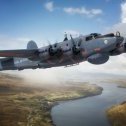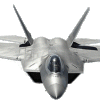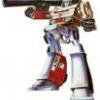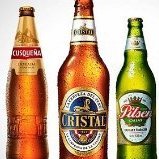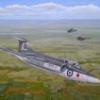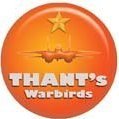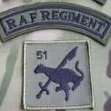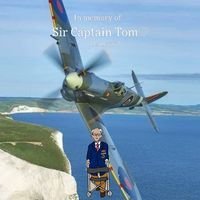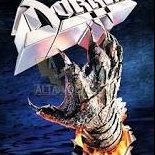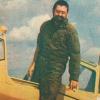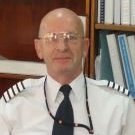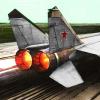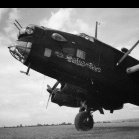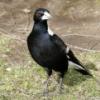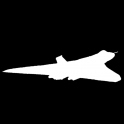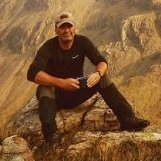Leaderboard
Popular Content
Showing content with the highest reputation on 03/03/21 in all areas
-
Finished a few days ago I've used original Revell GR.4 boxing with some goodies from Eduard, Aires, Quickboost and myself - Eduard PE sets - interier, exterier, gearbays - Eduard brassin seats - Eduard brassin Paveway II bombs and Sidewinders - Eduard BOZ and SkyShadow pods - Eduard decals - Aires cockpit - AIR4800 IDS early modified to GR.1 - Aires exhaust - Quickboost canon barels - Reskit wheels - selfdesigned 3D printed outer wing pylons, fuselage pylons, landing lights a crew ladder - selfdesigned mission marks decal and modified Foxy Killer markings (Eduard one has black outline which I do not like...) - selfdesigned masked and airbrushed sharkmouth Overall paint is a 3:1 mix of MrPaint 243 and 396. Hindenburgs are painted pure 243. Thanks for looking43 points
-
43 points
-
#6/2021 After the Beriev and the Rufe, here´s my dad´s next finished seaplane. The good old Monogram kit. First released in 1966, this is the "Hi-Tech" version from 1993 which includes PE parts. Built mostly oob, the thin main float to fuselage struts were done with plastic rods, so were the whip antennas, additional side float struts done with plastic stripes. EZ Line used for the antenna wires. Painted with Gunze H54 Navy Blue and Tamiya XF-18 Medium Blue, both ligtened up with white and some Tamiya White for the underside. Build thread here https://www.britmodeller.com/forums/index.php?/topic/235086105-aquatic-eyes-in-the-sky148-vought-os2u-kingfisher-us-navy/ The model shows a Kingfisher that was stationed aboard the battleship USS Wisconsin in 1944/45. DSC_0001 by grimreaper110, auf Flickr DSC_0002 by grimreaper110, auf Flickr DSC_0003 by grimreaper110, auf Flickr DSC_0004 by grimreaper110, auf Flickr DSC_0005 by grimreaper110, auf Flickr DSC_0006 by grimreaper110, auf Flickr DSC_0007 by grimreaper110, auf Flickr DSC_0008 by grimreaper110, auf Flickr DSC_0009 by grimreaper110, auf Flickr DSC_0010 by grimreaper110, auf Flickr DSC_0011 by grimreaper110, auf Flickr DSC_0012 by grimreaper110, auf Flickr DSC_0013 by grimreaper110, auf Flickr DSC_0014 by grimreaper110, auf Flickr DSC_0015 by grimreaper110, auf Flickr DSC_0016 by grimreaper110, auf Flickr DSC_0017 by grimreaper110, auf Flickr DSC_0018 by grimreaper110, auf Flickr DSC_0019 by grimreaper110, auf Flickr DSC_0020 by grimreaper110, auf Flickr DSC_0021 by grimreaper110, auf Flickr DSC_0022 by grimreaper110, auf Flickr DSC_0023 by grimreaper110, auf Flickr DSC_0024 by grimreaper110, auf Flickr DSC_0001 by grimreaper110, auf Flickr DSC_0002 by grimreaper110, auf Flickr DSC_0004 by grimreaper110, auf Flickr DSC_0001 by grimreaper110, auf Flickr25 points
-
Hi folk's a very brutal weekend was spent culling most of my old 1/72 build's sad to see so many binned but they really are just collecting dust now,One I really couldn't part with was a build from about five years ago of Airfix's little Tomahawk might have overdone the weathering a bit17 points
-
L-13 Blanik Planet Models resin 1/32 Custom printed decals, (home laser, Corel Draw and clear decal paper), cheatlines masked and airbrushed. Why YU-5326 ? My first solo in 1982 was on it.15 points
-
Heinkel He111P-2, G1+AN, 5./KG 55 "Greif", Villacoublay, France, 1940. By the start of World War Two, the Luftwaffe's core bomber strength consisted of the Junkers Ju87 Stuka and Ju88, Dornier Do17Z and the Heinkel He111H and P series. The Heinkel was the most numerous bomber in the fleet, with the H series the most numerous variant, powered by a pair of Junkers Jumo 211 engines. The P series was identical, save for using Daimler-Benz DB601A engines. The history of the Heinkel bomber is fairly well known, so to save me typing it all out again, here's a link to the Wikipedia entry on the type. Many years ago, as my 1940 obsession began to take hold, I struck upon the idea of buying the Airfix Battle of Britain 75th Anniversary gift set. It contained the newest toolings for the Hawker Hurricane, Supermarine Spitfire, Messerschmitt Bf109 and Heinkel He111. The overall cost was probably a bit cheaper than acquiring all the kits separately. Being a bit limited for display space, the three fighters got put together fairly quickly. The Heinkel, however, had to linger on the shelf, shivering in its polythene bag once the large box was gone. Time passed, and I made up my mind it was time to build the kit - and here it is. Built it straight from the poly bag, the box long consigned to recycling, aside from masking tape seat belts, using the original gift set transfers - hence no swathes of stencils and data panels! I also flattened the wheels slightly. Trouble was encountered fitting the gondola transparency, and also aligning the three-part nose transparency. You can see a bit of a step in the latter, but I didn't feel confident enough to file and sand it all down flush. I used a set of Pmask vinyl masks for the clear parts. I'm not a fan of vinyl masks, but these performed adequately. The model was painted with ColourCoats enamels, Humbrol acrylics for detailing, and Winsor & Newton Galleria Acrylic Matt varnish to finish up. My original plan had been to cover the undersurfaces with black distemper, a practice adopted during the Blitz to try and make the aircraft less visible to searchlights while on night operations. Since I had to paint the model in the normal camouflage colours anyway, I elected not to go the distemper route, so the finished aircraft is exactly as Airfix expected when they produced the gift set - plus the swastika marking, of course. The build was pretty enjoyable, aside from the transparency fit issues. It's a well-detailed kit that rewards a little patience, but isn't so complex that the modeller loses the will to live. The Heinkel essentially completes my 1940 Luftwaffe bomber collection, save for Revell's new tool Ju88A-1 and a nice big Trumpeter Fw200 that keeps catching my eye. When I'm feeling brave, I'll get a group photo of the bomber collection. The WIP thread can be found here:13 points
-
Finished up the 1/72 Airfix MiG-17F. Careful fitting required around the nose but an overall enjoyable build. Added Eduard's PE set/wheels and Master Model guns/probes. Kit decals were used and settled in nicely with Mr Mark Setter underneath and Microsol on top. Shown with the rest of my MiG collection. Thanks for looking! Rich13 points
-
Hello to all of you guys and girls of this forum.I present you my 1:48 t-6 Texan II of the USAF.It is a quite nice kit to work on.Fits almost without any major problems.If you are interested in the build process follow the youtube link bellow. regards,Dragan13 points
-
Hello all, Attached are some pics I took of the 1/72 Airfix Skyraider in a "what if" garb. Story goes that as war progressed past 1945, the FAA took in some lend lease Skyraiders to replace their Beaufighters on trial basis. Rugged, could take punishment, deliver ordinance, and could act as a fighter if needed. However pilots still preferred two engines than one for the long flights back home. The duck decal came from my Mustang spare decals. Markings from Matchbox Beaufighter. The kit was a mess. Outline and detail was way off. More suitable as a toy than a kit. The idea of a what if came about as a way to move the kit from my box of doom to completion. Actually I had a lot more fun doing some research to determine what my best finish option was to complete the kit than actually assembling it. This is my second submittal in a very long time. I had some trouble posting the images in a suitable size. The tutorials I found in FAQ were of some help. Obviously I need more work on this subject. Any help and comments will be appreciated. On the other hand, having such small images to show will hide all the hideous work and finish...lol!!!!12 points
-
BOAC Super VC10 Mid 1960s This is the Roden 1/144 kit with Two Six decals built from the box except for a bit of sanding around the nose to reduce the sharpness of the change in profile from parallel to tapered in plan view, and addition of the two small fences on each wing leading edge. I also emphasised the flaps, slats and spoilers slightly by some light scribing before highlighting with mid grey paint to get them to stand out a little more than the panel line engraving, which is nice but just a little heavy for this scale.11 points
-
Hi all, here is my Spitfire TR9 G-CTIX (PT462) which I converted from the 1:48 ICM Mark IX kit. Critiques are obviously welcome, but don't be too harsh 😜. This kit was just a distraction from all my school work the past few weeks so it's not perfect! Overall the kit went together well, brilliant abundance of parts from ICM. For £13 you get not only a full 1:48 Spitfire (that you can make several versions of!) with an engine, but also the ground crew with benches, ladders etc. A brilliant base kit for conversions. Here is a link to the build progress post : Enjoy! Thanks11 points
-
Another classic airliner completed. This is the Airfix Boeing 707, which has tooling from 1963, and decals from 2015. There weren't really any issues with this build, other than the way the engines attach to the wing with little notches in the pylons that are designed to hook onto lugs in the wings. These lugs were too large, or the notches in the pylons were too small, but they didn't attach easily. I had to cut out the lugs and slot the pylons into the wings. Also, the wrap-around decals of the nose were difficult to apply because of the tight curvature of the fuselage. It also lacks some details, like fan blades, and the engine exhausts are solid. I need to do some paint touch ups on the engine pylons because the BOAC decals don't fully wrap around the pylons, but I have run out of midnight blue paint. Here it is for now:11 points
-
Hello. This is my second chopper build and its in a big scale. 1/35 Trumpeter kit painted in Myanmar Air Force colors. OOB build with some scratch details added. Hope you like it.11 points
-
Finished my first March build ! This very quick refurb of an older kit literally occurred to me on Sunday night, with most work done yesterday. It's a Matchbox Wessex, originally built by me in early 1988 when this kit first appeared. It's had a general spruce-up and repair, repaint of some inaccurate areas (like the blades, pilot, exhausts), wire aerials added and a new set of decals for an aircraft from HMS HERMES in 1974, evacuating British Nationals from the war-torn beaches of Kyrenia in Northern Cyprus. A fast but well worthwhile restoration of this old kit! (My HERMES deck backgound reappears for the first time in years) ... and a "before picture:10 points
-
Hi guys long time since posting, I started this dio before I went into hospital five months ago for open heart surgery have recovered now glad to say .The bunker was made from plaster over a foam former ,the wading gear on both tanks were scratch built ,figs were from Dan Taylor and milcast , hope you like. I have also competed my latest 1 72 railgun the British 14 inch mark 3 ,BOCH BUSTER and am starting the daunting task of painting the three colour dazzle pattern.10 points
-
Hi All, Please see attached my 'kinda' finished 1:76 Matador. Never presented a model for critique before so looking forward to hearing back. I haven't touched kits for over 20 years and like a lot of folks here, got back to it after being locked in. This is the first Matador I've done, I managed to pick up two more at a bargain price, so looking to having another couple of goes at it. (Probably have a convoy soon.😆). My weathering I know, needs some work, (the days when everything was painted green and stuck on the shelf I see have gone.) So bear with me on that, lots to learn yet. But one I really enjoyed. Answers on a postcard..👍9 points
-
Thanks Andre. I’ll check that out for when I get round to the He115. I want to do a scheme that was used by a minelaying squadron, so that will be fun. I am very pleased with the matt varnish. It’s W&N Galeria acrylic, thinned 50:50-ish with boiled water for airbrushing. It’s taken a couple of coats here and there, but to my eye it has just the right amount of dullness. Masks have come off. Most of them came away without excessive protest. The vinyl masks do tend to leave a little adhesive residue behind, but that can be dealt with, either by gently dabbing the affected area with a small piece of tape or by cleaning with isopropyl alcohol on a cotton bud. I’ve managed to insert the machine guns and stuck on the final vulnerable parts like the trailing W/T aerial tube and the upper radio mast. Some final paint, chiefly the exhausts, and rigging a radio wire, and a tiny bit of weathering here and there, and I think this can be called finished. In which case, I need to clear the bench for some photography.9 points
-
Sorry to bring down the topic, but somebody sent me this and I can't stop laughing9 points
-
So my next armour build is up and running with this very old classic kit from Tamiya. When I started the build I really wasn't sure if this was a wise choice but as things have progressed I'm happy with the way the build is shaping up. Date stamped 1974 the kit does show its age and I'm sure there are far more detailed kits available nowadays but I have a soft spot for these kits and will do my best with what's available in the box. The tracks supplied with the kit were brittle and actually broke up when I tried to use them so I've ordered some replacement tracks from Miniart though I'm not sure they are the correct ones but they'll do for me 🙂. Also the decals are shot so not sure whether i can get replacements or not but I'll worry about that later. So first up the lower hull and running gear which has been primed and received it's first dark coat of OD. Next the main hull and turret And both with primer applied Finally a pic of the three main assemblies together I've dry fitted the parts and other than a small gap near the front panel everything looks pretty good to me. More to come tomorrow thanks for looking back soon 🙂👍8 points
-
MikroMir is to release 1/48th de Havilland DH.112 Venom kits. Source: https://www.facebook.com/mikro.mir.dnepr/posts/3970369419707431 First 3D renders V.P.7 points
-
Another Spitfire Mk lX in Desert Colours 145 Sqdn North Africa 1943. Had quite a few problems with this one, mainly trying to adapt the undercarriage to flight mode, the canopy not fitting well (big gap between the fuselage) and the decals breaking 😤 I think I should have taken a bit more time and care with it. I made my own stand from 3mm brass rod and a wooden plinth.7 points
-
Recently finished,not top standard,but hope you like it...: Marcus7 points
-
The last of my five-strong Wehrmacht AFV collection is a tank, conceived as a medium-weight fast (30 mph) cruiser. However, the 37mm AT gun of the early variants (less than 700 built of Ausf. A, B, C, D, E and F) proved to be helpless against the armour of the British Matilda and the Soviet KV. So almost 2,000 next generation Pz.Kpfw. IIIs (Ausf.G, H, and early J) were fitted with a 50mm AT gun. However, it was not until the beginning of 1941 that the Ausf.J was upgunned with a long-barrel 50mm cannon, making it a dangerous enemy for most Allied tanks in North Africa. These long-barreled variants (late Ausf. J, Ausf.L and M) totalled more than 2,400 of the 5,800 Panzer IIIs built. But after El Alamein and Stalingrad, it became evident that the 50mm AT gun was barely effective against the sloped armour of the M4 Sherman and T-34, and thus some 700 final Pz.Kpfw. IIIs (Ausf.N) became support (i.e. infantry) tanks. Fitted with a short-barrel 75mm gun, they were used mainly as light tanks screening the heavy Pz.Kpfw.VI Tigers. Weighing about 23 tons and crewed by five men, all late-generation (Ausf.J - N) Panzer IIIs were powered by a 300 hp Maybach V12 petrol engine. The best 1/72 Panzer III kit on the market is the quite recent (2016 tooling) Ukrainian Unimodels kit, available in six different boxings. Mine is the #271 "Ausf.J". It's built OOB except for a drilled (0.7 mm dia) gun barrel and exhaust pipes, and an antenna made of the Aber 0.3mm wire. The only problem was the complexity of this tiny kit. The entire vehicle, about 75mm long (88mm including the barrel), consists of 237 plastic and 11 photo-etched parts ! That is some 85 parts for every inch of the hull lenght - paranoia ! My idea was to have the Pz.Kpfw.III in the early Tropen scheme of RAL8000 Gelbbraun and RAL7008 Graugruen - much darker than the 1942 DAK scheme. However, it was very difficult to find a mid-production (i.e. long gun, but still with transverse air intake covers behind the turret) Ausf.J from Africa. After some digging, I managed to find a batch of similarly camouflaged tanks from a completely different area. The „white outlined 123” is one of the four (the others are 115, 122 and 124) long-barrel Pz.Kpfw.IIIJs spotted in Rostov in July 1942 during their expedition to the Caucascus. They belonged to the famous 5.SS Panzerdivision Wiking. These early 1941-production tanks had the then standard Tropen camouflage. The paints are (as always) brush-painted enamels: Humbrol 83 for Gelbbraun and 155 for Graugruen. Then the Vallejo acrylic matt varnish was brush-applied overall. This time the decals are OOB. Only the Luftwaffe-style swastika came from the Hasegawa Heinkel He51. The pictures are taken with an LG smartphone. Comments welcome.7 points
-
Hiya Folks,.... Another one from the Australia & New Zealand GB,...... and one which I often spoke about building with Andy (Silverfox) before his untimely and tragic death. I finally got around to starting and finishing this 1/72nd Academy PBY-5 Catalina as part of the GB in his memory , wearing the markings of 6 Sqn, RNZAF, based at Halavo Bay, Florida Island in the Solomons, 1944. On 4th February 1944, while flown by Flying Officer Beauchamp and crew, this aircraft, NZ4017 made a very risky mid ocean pick up of five survivors from a USAAF B-24, which was especially dangerous as their radio had failed and they were unable to inform anybody of what they were about to carry out. This earned the Captain a well earned DFC,.. and five `Dumbo' elephant motifs` were added to the nose (although were they mission markers,..... accounts vary and I must admit I think that they could be?),..... Dumbo being the code name for Air Sea Rescue missions. Sister aircraft NZ4007,.... I do like XX-C behind it, wearing a coat of white paint on the sides and undersides and would like to model that one too!; Here is the WIP ,.... the model was brush painted using old Aeromaster acrylics and the decals came from Aeromaster too,.... special set 72-10 which features a number of RNZAF aircraft from WW2; The model; Cheers Tony7 points
-
Couple of shots of the latest build (still a bit wet) the Airfix 1/48 Sea Fury done as the Deutsche Luftfahrt Beratungsdeinst’s’s (DLB) sole single seat target facilities FB Mk 50 D-CACY. The aircraft was formally in service with the Dutch Navy before being sold and pressed into the target facilities role by the DLB. Fairly straight forward build which included removal of the wing armament and tail hook. Extras used include Eduard’s Cockpit Set, Barracuda’s Gearbay, a new pitot from Master and decals from Fundekal. Folded wings take up less room in the cabinet! Hope it’s of interest.7 points
-
Cheers guys Not much time at the bench lately but manged to add a few more details to the build. Seen on one picture that Longbow @Longbow posted of an M10, it carries a German recovery rope shackle on the rear lifting eye, probably a Gucci bit of kit to have for the crew so i have added one. Bucket got primer and is awaiting paint. Talking of recovery ropes, popping mine together, using some copper braid on the kit eyes, one more eye to add. Enjoy Dan7 points
-
Yessss. Thanks Stephen - ref. K48093 - Lockheed/Fiat F-104S Starfighter https://www.luckymodel.com/scale.aspx?item_no=KI-K48093 I don't wanna be unpleasant but the currently proposed box art (see herebelow) clearly displays a 132° Gruppo /3° Stormo aircraft, a tactical reconnaissance unit that never operated the F-104S variant but the RF-104G. See also in this artwork the R/F-104G single aft fuselage strake. So why the Sparrow missiles that only equipped the F-104S from the interception units? By the way the F-104S "Spilone" in its pure interceptor sub-variant - or CI for Caccia Intercettore - had not only a distinctive double aft fuselage strake but also no cannon muzzle as the gun was removed to make room for the Sparrow avionics. Also to be noted the F-104S had larger air intakes inspection doors and a different engine nozzle. Even with the best will in the world you don't transform a top F-104G kit into a F-104S one just providing a pair of Sparrow missiles. So I don't expect a genuine F-104S kit but instead just a rebox from the G variant with AMI decals. V.P.7 points
-
7 points
-
What a lovely, elegant old thing. This is one of Trumpeter’s earliest kits, and it shows. It’s no.13 in their range; I bought it in 2003. It has a number of good points, the most important being, it’s a Badger. There’s never been one since and the few that came before it in 1/72 were ropey old things. The kit breaks down intelligently and allows for variants with glazed or radar noses, and lurking on the runners and the PE fret are odd aerials that suggest some of the EW versions too. Not all are there, though - perhaps more will appear on smaller runners in a new boxing, as the missiles for this one did. It has three, an AS-2 and two AS-6 in old money, as well as some bombs for the basic bomber version. The missiles allow you to build a K-10 (Badger-C) or a K-10-26 (Badger-C mod), although the box just says K-10 and you have only one set of decals anyway. According to the illustrations in International Air Power Review 9 they’re for a K-10-26, but as that would have been converted from a K-10, it may not be a problem. I heard bad things about the decals and used some from a Trumpeter Backfire kit instead. They don’t seem much better, but they did at least respond to some Mr Mark Softer. I asked about this kit last autumn and you can see the results in the Cold War forum. Having scared myself silly, I decided to ignore almost all of the problems as they were beyond my skills. So I’ll mostly tell you about it as it comes, which isn’t all that good either. Apart from the mistakes, this is also a scruffy kit. There’s flash everywhere, including places that you wouldn’t imagine could have it, like panel lines. Who knows, this may mean there are other versions in reserve. Shapes are mostly OK but fit is very patchy, especially the separate control surfaces. I’ve used card and filler everywhere - along the fuselage, the engines, the wing roots, the ailerons, the tailplanes, the pylons, the missile. I will say, though, all the joints in the mid-section are nice and robust - it’s no problem to hang the long wing off a separate engine nacelle. And the anhedral practically sets itself. Panel lines are engraved, but very variable. Some run out, many are too shallow, and some are missing while others are spurious. But at least they mostly line up where parts meet. The plastic is good to work with, softish but not flaky. NeOmega helped me out with a couple of prominent errors. One is the engine area. At the front, Trumpeter give you D-shaped intakes that sit right next to the fuselage; NeOmega’s have the right shape and sit proud as they should. However, they don’t fair smoothly into the engines, and they aren’t deep enough. The Badger has a prominent spar across the duct that neither the kit nor the replacements allow for. One fix is intake covers; you’ll just have to promise not to look too closely into mine. At the back, NeOmega supply much better exhaust pipes, but no help with the incorrect exhaust fairings. I should have done what General Melchett did all those years ago, and just removed everything aft and rebuilt it. The other error is on the left wingtip. NeOmega give you one fitted for in-flight refuelling - the world’s most hair-raising technique. The kit misses this out, possibly because Chinese-built H-6s appear not to use it. Unfortunately the resin part is too shallow for the wing profile, so it needs a lot of fairing in. It also doesn’t fit the wingtip lights, both of which need a lot of trimming. It’s odd that after twenty years, no-one has gone to town on this kit as they have with others from Trumpeter. But then, think of the cost. (I’ve just looked up Badgers - the 1/144 version is now £3 more than mine was when I bought it!) I’ve done a few small changes of my own because they’re obvious and fairly easy. One is the flap cut-outs and strakes, installed to allow the flaps to clear the missile fins when lowered. The next is the ventral missile mounting. Trumpeter would have you mount the AS-2 outside the airframe. An easy fix is to use only the bottom half, or thereabouts, to show it correctly recessed. But as I wanted to use an AS-6 under the wing I fitted the bomb doors, filled all the lines, and scribed in the blanking plates that cover the recess when it’s not in use. If you install the bomb bay with a couple of extra bulkheads inside it, this is fairly easy to do. I also closed the tops of the turrets to hide bits that shouldn’t be on show - though these are only a partial fix; put sealing strips below the rear guns; and added “gear down” indicators to the maingear fairings. The cockpit is a problem because it’s all too small and sits too low. As it’s black and hides under heavy glazing frames, I fitted it just to fill the space. For no obvious reason Trumpeter give you seats in two sizes; the smaller ones up front are far too small for the PE seatbelts that this box includes, so I didn’t bother. In fact, I did without a lot of the PE, as it was out of scale or buried - I’ve used the external aerials and the torque scissors for the nosegear leg. A fair bit of counterweight is a good idea; there’s plenty of room in the radar nose. The instructions put weight behind the nosewheel, but it works better further forward, and the nose-to-fuselage joint is well up to it. Also at the pointy end, you can insert the nosewheel bay between closing the fuselage and adding the nose, which is easier than placing it in one fuselage half and getting the other to align properly. The basis for the paintwork is Halfords Peugeot Aluminium, with other metallic shades to break it up a bit.6 points
-
Revell's old kit from the early 80s, rehabilitated with a modified Trumpeter cockpit and Wolfpack ejection seat, Reskit wheels and lots of scratchbuilt details. Painted with MRP lacquer paints (wasn't sure about the shades, but it looks better after the decals and gloss coat). The decals are all from the kit, Revell's recent releases have brilliant decals and take a lot of the fear factor out of that part of the build! The subject aircraft was a 20 Sqn wing commander's aircraft based at RAF Wildenrath in 1971. It was lost in an accident the same year. There's a great photo of it in the hangar looking ludicrously shiny, so I've tried to replicate the glossy finish without crossing into Toyland! Some of the added and modified details: intake shapes rebuilt with Milliput new cockpit and modified seat auxiliary doors cut out and modelled from plastic card nose camera port reshaped and enhanced airbrake bay built from scratch tail stinger remodelled and detailed all RCS ports and various vents opened and detailed fwd and aft canopy area remodelled and detail added gun pods remodelled and opened new resin wheel set from Reskit raised panel lines removed and rescribed with rivet detail I'm glad I went to the effort in the end, it's the only early Harrier in 1/32 and was worth it! Anyone interested in the build log should click here: All the best and thanks for looking, Alan6 points
-
So you prepare for a GB. You identify the kit in your stash which fits the topic and start a thread on BM, just as I did with my Gripen, Maybe you even post some pictures of the sprues. And then a kit is release which tells such a compelling story that fits a GB topic so exceptionally well, that you just cannot help it, but have to slot it in. This is the case here: The kit itself is a repack of the well known Zvezda mould by a fairly unknown polish company called Akkura (at least I haven't heard abou them unitil a week ago or so). However it is the story behind the markings is well worth telling (they are made by a company called Oscar Lima Decals - the decal sheet includes additional undescribed markings for Czech and EUFOR machines). I would like to concentrate in this GB on the machine depicted on the box art though. Gentlemen and Ladies, I present to you the: MIL Mi-8 T "LIVE AID" (POLISH RELIEF SQUADRON ETHIOPIA 1985) The great hunger To say Ethiopia was not really blessed with luck in the 20th century would be a gross understatement. The country, which had remained independent during the rampart colonization phase of the 18th and 19th century but was invaded and conquered by the Italians during Mussolini’s fascist reign. After regaining independence in 1941 the country struggled with similar problems as other African nations ideological changes, war and poor government policies, The most prominent crisis was particularly though the famine and drought in the mid-eighties which led to the demise of between 400,000 and 1,5 million of Etiopians. This crisis was widely publicized in the world and sparked a lot of relief efforts, with “Live Aid” concerts being the most well-known. What was remarkable that the relief was not only orchestrate by the west but was an effort involving also countries from the communist bloc. In fact, it was the Soviets who majored in the logistic support of the operation. While the response to the famine is regarded critically in hindsight, as it prolonged the civil war and rule of the communist regime in Ethiopia, it was a pivotal moment in terms of NGO involvement, relief and humanitarian aid. Poles in Ethiopia As mentioned, the humanitarian effort gathered support from all around the world. For Poland this became an opportunity to regain some international goodwill after lifting the martial law which was imposed in the wake of the pro-democracy protests in 1980/81. Therefore, while struggling with economic issues on it’s own, the polish government decided to send in 1985 a detachment of three MI-8 helicopters to Ethiopia, which became known as the “Polish Relief Helicopter Squadron in Ethiopia. What might come as a surprise the Poles rejected to put their squad under Soviet command arguing that the UN, RAF and Luftwaffe requested urgent help, in scouting out locations for landing strips, and also since their Transalls and Hercules could not reach all parts of the country. Therefore, the Ethiopian mission became one of the first instances of cooperation of Poles with it’s later NATO partners. An interesting feature of the kit I am about to build are the markings. The kit shows a prominent red cross, but you may struggle to find images of this livery. The reason is, that these initial markings were vetoed by the International Red Cross, which did not want to associate itself with the communist regimes. This led to, after the first month of operations, to a replacement with the red and white checkerboard, the traditional insignia of the Polish air force.6 points
-
This is my completed model of the Chaparral 2D which was driven by Phil Hill and Jo Bonnier to first place in the 1000km race at the Nurburgring in 1966, the Chaparral team's first visit to Europe. It is based on the Provence Moulage kit, with lots of detail parts from the metal Marsh Models kit. The PM kit is nicely cast in resin and is supposed to represent the 2D as it appeared at the 'ring and at Le Mans. It most closely resembles the Le Mans configuration, so I back dated it to correctly portray the earlier 'ring car. This involved blanking off the nose mounted light apertures, changing the vent/mirror housing above the driver's position, and modifying the tail spoiler to the much bigger 'ring arrangement. The windows on each side of the engine compartment were incorrect in shape, so I modified the shape and vac-formed new windows. The PM airbox was too long, too tall and too narrow so I used the Marsh part instead. The rear window opening was moved rearwards a small amount to its correct position. Above are the templates for the new side windows, and the Milliput masters for the new vac-formed windows. I modified the chassis plate by removing the blob of resin that represented the engine and substituted the metal parts from the Marsh kit. I cut the top off the incorrect solid bulkhead, made a roll hoop from plastic rod and installed a window of 10thou clear sheet. The completed, modified, chassis plate, with full engine detail, etc. Body painted, with windows installed, ready for decals. The wheels and tyres are also from the Marsh kit, as are the tail lights and mirrors. The Dzus fasteners are by Renaissance. Humbrol enamels throughout. The race numbers are from the PM kit, the Chaparral badges are from a Microsport sheet, the license plate decal is by Patto, with Marsh decals for the tyre sidewalls. Quite chuffed with this one! Thanks for looking, Trevor6 points
-
Hi folk's,an old build that escaped a recent cull was my first ever attempt at an Eduard kit,built about eight years ago before my first foray's into airbrushing I found a colour photo of a trials aircraft hence it's scheme,she was a bit worse for wear but a wash down and repair has done wonder's.6 points
-
Hey thanks for the comments fellas! Whilst looking for paint, I was interested in this racing white that tamiya do TS-7 I bought a can of it. Sort of bone white, not normally a color I'd consider, but I think if I get a god color to contrast it, it should work out. I am sort of wishing I hadn't assembled the whole thing, I could have left the engine off for example. I don't like adding layers of paint if I don't have to. Trying out some colors here, I thought I'd go for a pale blue, I do like Royal Blue X-3, so I tried mixing it with white, as the royal blue is so darl I think it will look black next to the off -white (you can see the white band on the test piece here looses some of it's butteryness next to those blues) I also like the Park Green, but I think it's a bit vibrant for the off-white. Quite a bit of sanding to get rid of the orange peel. I ran some panel line wash in there because it's satisfying to do so. I started to think about the paint scheme, I thinking something with chevrons. I also threw some black on the rear end, so I could better judge how much surface area there is to design a scheme for. Sort of gummy looking finish on the engine, it's be better in matt, but - ugh. The engine being black really changes the graphic look of the rear end, I really like this off-white next to the black. I think I heard that the engine was kit-bashed from a yakult bottle. Further sanding resulted in to much of the white undercoat coming through. So I gave it another once over. Cheers!6 points
-
6 points
-
Another daily boring update. The prop decals and underwing stencils yet unapplied - nacelle stencils applied, though - and detail painting done except the de-icer boots. Nacelles and fins still just pushed in place, like upper turret too. Some landing gear parts must be attached only after the nacelles are on. Propeller warning stripe was painted, not a decal. I just had to strip her of paint masks this early! Painted the nav and formation lights too. Oops - Bomb bay doors still need a wash! V-P6 points
-
Thanks Nikolay! I’m not too bothered as long as there’s enough of a shine for the transfers. As it is, I think there’s some silvering on the fuselage codes, which I’ll deal with tomorrow. I decided to push on and get the matt varnish on. So, the props and fronts to the engines are installed, the rudder quadrant and pitot went in, and a small amount of paint got retouched. It’s looking the part now. I must leave it alone overnight to let the varnish dry thoroughly. If it needs it, I’ll sort out another coat to even things out tomorrow. At this rate, there’ll be an RFI entry some time tomorrow!6 points
-
Most of this morning spent on getting the windows in. Note that some seem to be curved, like the fuselage: Like, but not the same Anyway, fit, shave, fit, shave and one side's done and thinned Canopy glue wicked* around the edges from both sides: What's that? You can see fingerprints on some? OF COURSE YOU CAN - they've all been handled about 3,452 times! Calm, calm… * By the way, the thinned glue was wicked, not wicked The result was wicked it has to be said. Has that messed with your head too? Some time later:6 points
-
As mentioned in the WIP on this model, I’ve had it for a while and uhmmed and aaahhed about starting it. It’s a re-pop of the old Frog kit - the frog number is even on the sprues. It’s also the upgrade kit which comes with PE and resin parts. Never having dealt with resin parts before, I simply (he says😆) copied the measurements and 3D printed replacements. I also decided to not do the two two options of livery but instead home made decals for W5856 in its current guise (afaik). The plastic goes together ok, the moulding leaves a lot to be desired with flash and mis moulding on some parts. A couple of parts were warped and broke when I tried to straighten them, but they glued back together again. Chris (bigbadbadge) gave me instructions on how to do the rigging (which I’ve never done before). Once again thanks Chris. I then saw an image with the white ensign with two crew members saluting - that was then that and I did my best to emulate it. I think I did ok. The WIP is here And with my other carrier borne aircraft (Sea Vixen to be restored).5 points
-
Airfix 1/72 Supermarine Swift FR.5 Yes, another Swift. Now that CedB has finished his marvellous build I can reveal my, very inferior, attempt at this kit. This is the 2015 moulding with soft plastic and good engraved detail. It was built OOB adding a Tamiya tape harness. 2 options, 79 Sqn or 2(AC) Sqn. I chose the former, box top, version, without the ventral tank as I like the clean lines that that omission gives, and also because in the 50 years I've been doing this I've never had a PRU Blue finish before. Paints were Xtracrylix for the Dark Green and Dark Sea Grey and Modelmaster for the Blue. I think I'm right in saying that every review of this kit has shown it to be a difficult one whoever reviews it. For me the major problem was the difficulty of assembling the fuselage. You have to put in the cockpit tub (split in two), the exhaust pipe, the intake trunking, nose weight, noselight and line up the nose wheel and wing at the same time. The tolerances are much less than 1mm, there's no room for the noseweight and the noselight interferes with the nosewheel tub. The workaround I came up with was a, don't bother with the noselight part and use Kristal Kleer instead b. Put the weight behind the pilots seat where there is room not forgetting to add more as it's further back. I put in 5g. and c. don't allow the glue to dry so final adjustments can be made. So, the fuselage (and BTW the undercarriage as well ) could not fit as moulded. This was a kit that fought me all the way not only with the fuselage issues but also, as some may recall, my varnish layer turned milky. I was able to retrieve it by over varnishing with gloss. Close inspection however shows the surface finish is now forever ruined + who knew that cleaning a canopy with thinner following an accidental paint spill would result in a fogging issue. I didn't. I do now.... It was a kit that, frankly, I was glad to finish and move on from. Not so much a 6 footer as a 'hide in the far, dark recesses of the display cabinet and never be allowed to see the light of day ever again'. Even now, on posting these images, I see that I forgot to deal with the cannon ports...don't care. I'm not going back to this. More images follow in a 2nd post5 points
-
Finally calling this completed, airbrushed exhaust stains behind the engines. This is Tim signing off from ANZAC GB, so G Day cobbers.5 points
-
Hi all, Not much of an update, but I thought I'd put this Film clip in for your viewing pleasure plus some additional info RNZAF Sunderland Transports Arrival late 1944 In the clip it makes mention of a wing to wing collision between one of the Sunderland's and an RNZAF C60 Lockheed Lodestar. All concerned landed safely, the Sunderland landing on the coast of the upper North Island for repairs. The film also mentions the 4 crews were ex 490 (NZ) Squadron Catalina crews based at Jui (Near Freetown, Sierra Leon West Africa) (RNZAF Official -RNZAF Museum-Used with Permissions) These crews had actually gone to Britain from Jui North Africa, for conversion to the Short Sunderland. ( I knew one of these veterans) While training at an conversion OTU a 490 (NZ) Crew sank a U Boat see photo below (RNZAF Official -RNZAF Museum-Used with Permissions) While there (after conversion) some of the crews were picked to fly the 4 Transports to New Zealand. The journey while not even started had complications It was decided to replace the Non Feathering Propellers with feathering types (My Sunderland Veteran friend, had seen first hand what a non feathering prop does when separating from a engine). However the night or so before departure, the RAF Squadron Engineering Officer decided that this was not on, and ordered all 16 propellers (non feathering) be put back - needless to say the ground crews pulled an all nighter Eventually per film the Sunderland all arrived after an Epic voyage These are three of the 4 at Mechanics Bay (have been there) Auckland. The 4th up North (RNZAF Official -RNZAF Museum-Used with Permissions) On the Slipway at RNZAF Station Hobsonville (Hobsonville is a little further up the Waitemata Harbour (pronounce Why-Te-Matt-Ah) , still with RAF Markings (RNZAF Official -RNZAF Museum-Used with Permissions) This is NZ4102 (previous ML793) on the hard in front of the main hangar at Hobsonville (walked around that area a number of times with Sunderland's being serviced) Note the already weathered look. Just an FYI, if you note the Gent (no hat) with back to the hull below Porthole, there is an opening in the hull side just above his head, that is the Water Closet/Lavatory/Head flush outlet (RNZAF Official -RNZAF Museum-Used with Permissions) Well I hope you like the above, back to actual plastic cutting/Gluing soon Thanks for looking in Regards Alan5 points
-
Hello Everyone... For my next installment I sanded down the main seams with the first rough sand. Once that was done I finished the seatbelts. Once that was done I mounted the wings, stabs, and strakes. Next up is to work the sand, fill, and repeat stages. Please feel free to ask questions, post comments or thoughts. Dennis5 points
-
I built one of the airfix ones last year and thoroughly enjoyed it. Ignoring the issues mentioned above, it goes together well. I have another couple and will build them, great for overcoming modellers block and you can never have enough Hurricanes on the shelf!5 points
-
Aidrian, I believe that you are correct re Spitfire MK.VIII. I have been unable to see that panel line on any of my photos. Either its not there or, as suggested by Ray, it is well and truly covered by filler. These photos cover the A/C used by the RAAF, so it may be possible that some of the very early JF series did have the panel line. The shot below shows Spits at the knacker's yard post war. They have been sitting there some time so paint is wearing off and panel lines can be seen. No visible panel line on the top cowling of A58-427,(LV652), in the foreground. And a few more 'close up' shots: The top A/C is A58-435, (JG622), the next is A58-601, (MV119), and the last of A58-617, (MV115), is for Ray! Of interest on A58-601 is the RAF serial in 1" high yellow letters, to ensure that panels for the various A/C did not get mixed up when the aircraft were re-assembled by the colonials. Peter M5 points
-
Quite a lot of Meteors there, can't wait to get back. Didn't manage to get good photos of VZ608, so there's a good reason to return. Also hope they can open up the interiors in the summer.5 points
-
I could see someone doing a 1/144 Comet, but doubt we'll see anything mainstream in 1/72 any time soon And I do wonder how much what variant a model is matters to most people. Obviously for us grumpy lot it does, but the average person doesn't know the difference between a Meteor NF12 and Meteor NF14 (well nor do I because Meteors aren't my thing, I just know Newark's got the last NF12). I suspect to most a Meteor is a Meteor, a Vulcan is a Vulcan, a Comet is a Comet, a Do215 is a Do17, a Lincoln is a Lancaster and a Venom is a Vampire.5 points
-
Well that was a job... the kit has three little recesses each side of the fuselage, which the instructions says to just paint black. On your actual Alouette these are deep step holes cut into the fuselage, used to access the engine. The grab rails are hinted at in the moulding. I thought it would be more representative of the real thing to cut them out (or rather drill, dremel, cut and needle file them out - a quick whip round with Tamiya green top smoothed out the edges a bit but maybe a bit more tidying up tomorrow night), however the scale thickness of the plastic is much greater than that of the actual fuselage. I think I'll have to put some bits inside the fuselage to prevent light bleeding through from one side to the other and from the vent at the top, and will use some superfine plastic rod for the grab rails further down the road.5 points
-
Hi everybody, apologies for being one day late on WE progress report - I went on till late last night at the work bench and I didn't feel like sorting pics and posting This update is all about painting - beware! Lots of pics to follow After airbrushing the underside, I sprayed a protective coat of Aqua gloss (forgot to take a pic ) and masked for the topside camouflage With all set and ready, I started airbrushing RLM71, using Lifecolor Dark Green through my trusty PROCON BOY, thinned with IPA. Something went wrong initially, though You can see it better on the following close-up It looked as if there were flakes inside the paint, despite of me stirring it vigorously before and after mixing it with IPA. The same happened on port wing and a few other spots So I stopped there, micro-meshed those splatters and restarted with fresh paint. At that point, though, I add to spray more coats than I intended to cover the splotchy look, so I had to reinforce the pre-shading with a post-shading, adding Matt White to the mix and more thinner, spraying in the middle of panels. Here's the cowlings the rudder and the aircraft More like it, I guess Next pic shoes the pre and post shading better Of course the second camouflage color, the markings and all will tone down the contrasts, but this is exactly what I was aiming for. I did remember to spray the inside of the wheel spats with RLM02, BTW Then I gloss coated it in preparation for the splinter scheme masking which took quite some time to be deployed... I then airbrushed RLM70, this time using Tamiya Black Green; this is a very dark color, so I wasn't expecting any pre-shading to show through. Instead, once I was happy with the base coat, I added some Tamiya Flat Black straight into the airbrush cup, thinned to a watery consistence and post-shaded spraying along the panel lines Propeller and top side of the pitot done too Then I started unmasking: top cowling Bottom cowling This side needs a respray of the RLM65 along that fuzzy demarcation line Rudder and eventually.... Alright, I'm pretty happy about about how it turned out, but there are a few touch ups to do; port wing leading edge The masking tape lifted some paint form the PE port walkway - not a big deal, since I need to respray it black, still a bit annoying, because it means I didn't prepped it properly Another couple of paint lifts on the tail side, plus one self induced by scraping too hard with my tweezers to remove the masking tape: one on the spine, one on the fin and one on top of it Here's another tweezers slip damage This will probably get hidden by the back sliding canopy, since I'm going to pose it open - we'll see. Lastly , some poor masking on the underside - oddly enough not along the demarcation lines bit on the middle tape patches - a real Friday Afternoon masking job This is were I left it last night; now I need to micromesh around the areas to be touched up or resprayed, then I have to gloss coat the RLM70 painted parts and then I can re-mask locally and respray what's needed. All good fun All comments welcome Ciao5 points
This leaderboard is set to London/GMT+01:00




